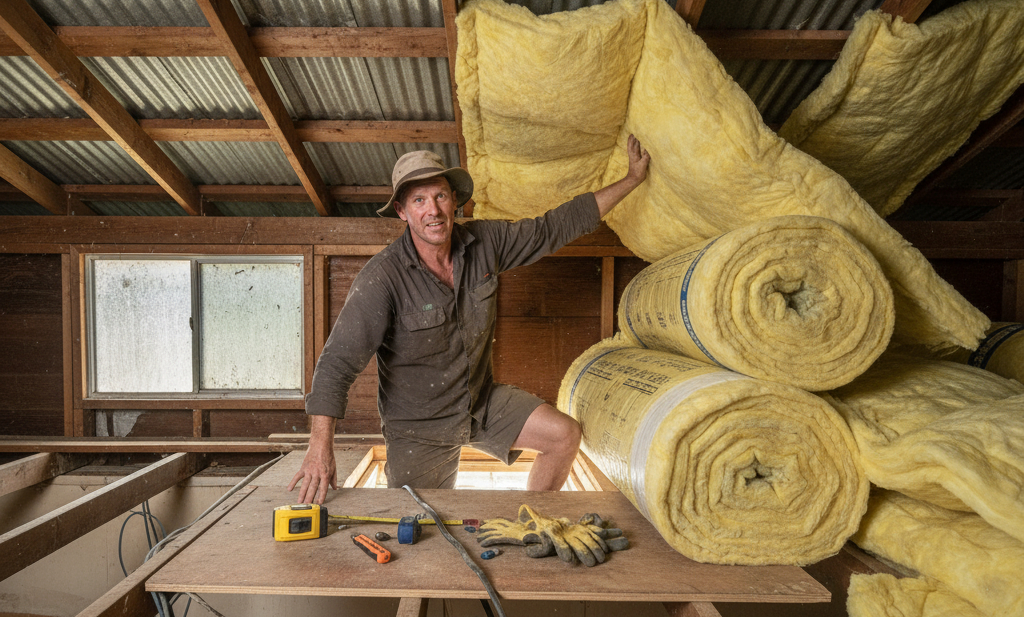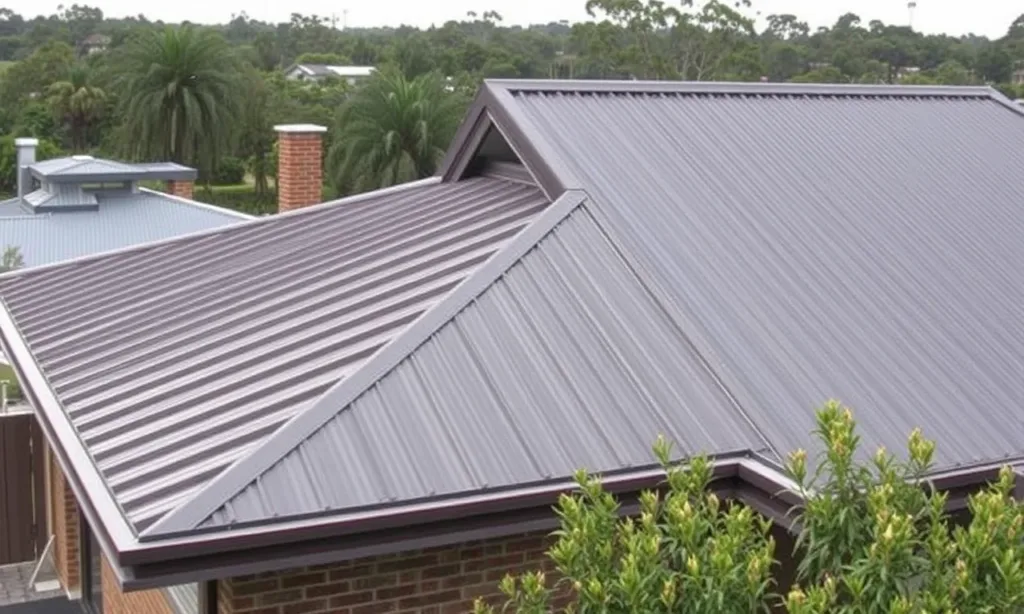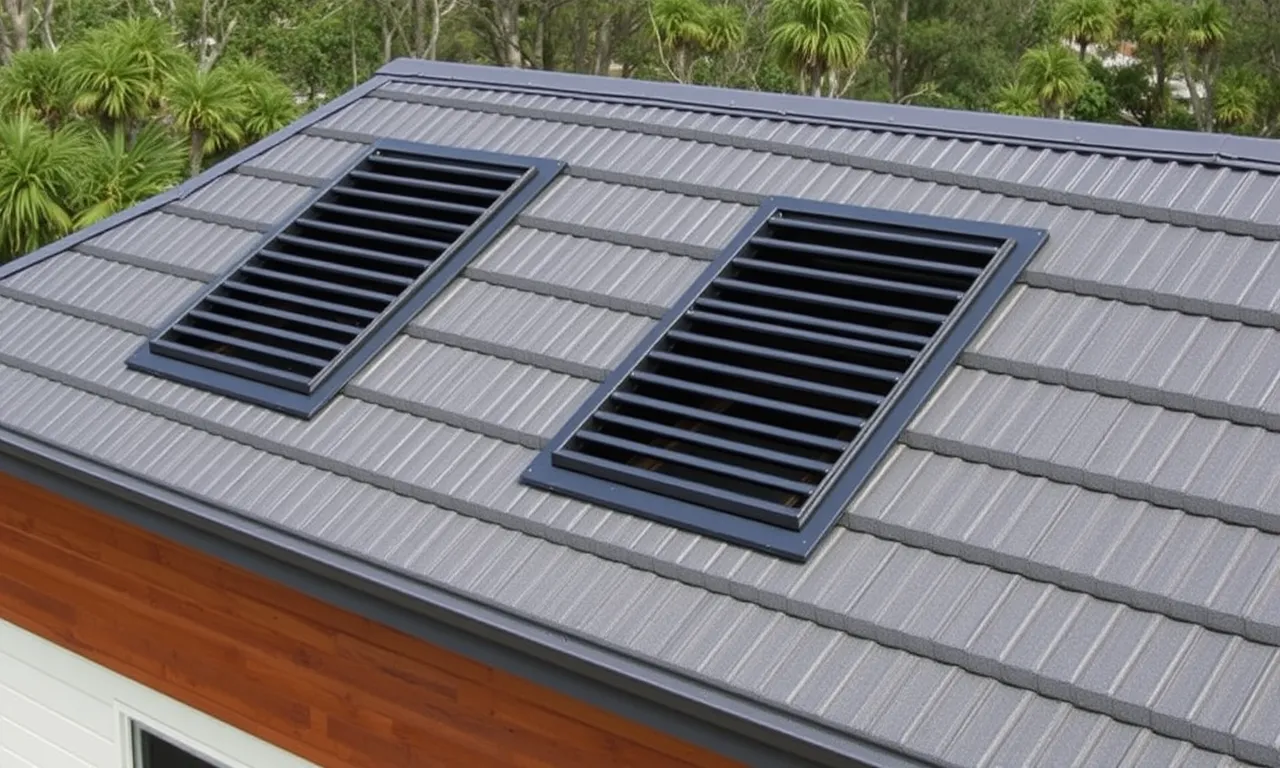
TL;DR: For Australian homes with hip roofs, effective ventilation and insulation are non-negotiable for comfort and energy savings. A well-designed system, particularly one utilising ridge vents and soffit vents in tandem, combined with appropriate insulation, prevents heat build-up and moisture issues, significantly improving your home’s energy efficiency and reducing cooling costs.
Australia’s climate presents unique challenges for homeowners, especially when it comes to keeping our homes cool and managing energy bills. If your home features a hip roof – that distinctive design sloping down on all four sides – you might be unknowingly battling a hidden enemy: trapped heat and humidity in your roof space. This isn’t just about comfort; it’s about the longevity of your home and the size of your quarterly power bill.
The problem often lies in inadequate roof ventilation and insulation. Without a proper system, your roof space can become an oven in summer, radiating heat down into your living areas. In cooler months, moisture can accumulate, leading to potential issues like mould or timber degradation. This constant battle against temperature extremes forces your air conditioning and heating systems to work overtime, chewing through electricity and costing you a small fortune.
But there’s a solution that works with your hip roof’s design to create a more comfortable, energy-efficient home: a strategic combination of ridge vents for hip roofs, paired with effective soffit ventilation and proper insulation. This article will guide you through understanding how these components work together to transform your home’s thermal performance, saving you money and enhancing your living environment.
1. Understanding Your Hip Roof’s Unique Ventilation Needs
Hip roofs are incredibly popular in Australia, known for their sturdy structure and aesthetic appeal. However, their design, with slopes on all sides converging at a ridge or peak, can create large, often complex attic spaces. These spaces are prime locations for heat and moisture to get trapped if not properly ventilated.
During Australia’s hot summers, solar radiation heats your roof tiles or metal sheeting, transferring that heat directly into the unventilated roof space. Temperatures inside an unvented attic can easily soar to 60°C or even higher. This superheated air then radiates downwards into your ceilings, making your home feel stifling and forcing your air conditioner to run constantly. In winter, inadequate ventilation can trap warm, moist air rising from your home, leading to condensation and potential damage.
Example: The Oven Effect
Consider Sarah’s Queenslander home with a beautiful hip roof. Before addressing her ventilation, her home felt like an oven in summer, even with the air conditioning blasting. “You could literally feel the heat radiating from the ceiling,” she recounted. “Our power bills were astronomical, and we still weren’t truly comfortable.” This is a classic symptom of an unventilated hip roof, where the large attic acts as a heat sink.
2. The Power of Ridge Vents for Hip Roofs
Ridge vents are a critical component of an effective roof ventilation system, especially for hip roofs. These low-profile, continuous vents are installed along the peak of your roof, seamlessly blending with its design. They work on the principle of the “stack effect” or convection. As hot air rises in your attic, it naturally exits through the ridge vent openings.
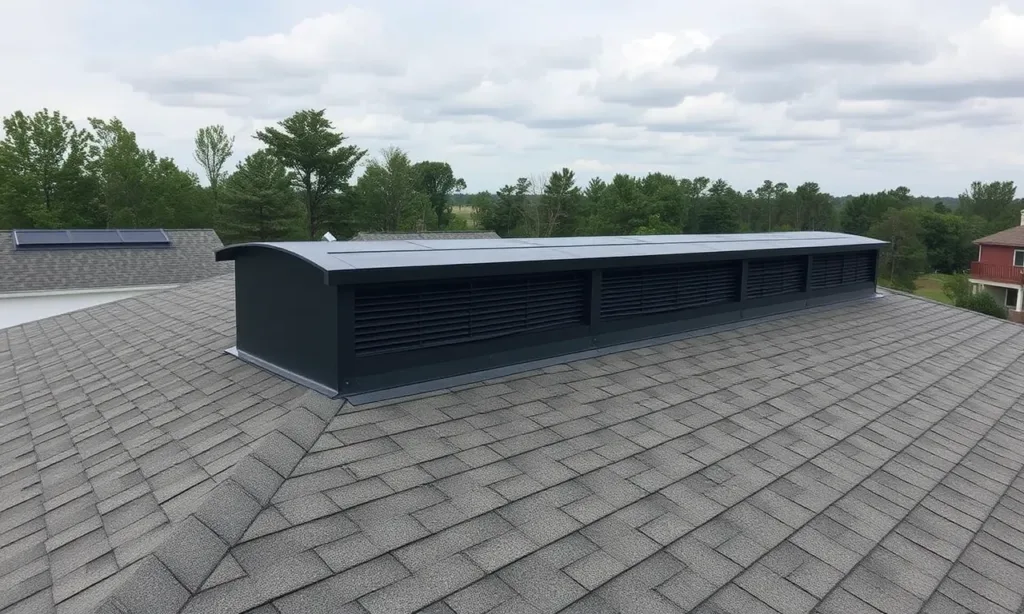
For hip roofs, which often have a shorter ridge line compared to gable roofs, continuous ridge vents are particularly effective because they provide consistent exhaust along the entire available peak. This allows for a steady release of hot, stagnant air, preventing it from building up and radiating into your living spaces.
Example: Keeping the Heat Out
After her initial struggles, Sarah consulted a local roofing expert. They recommended installing a continuous ridge vent system along her hip roof’s peak. “The difference was almost immediate,” Sarah noted. “Even on scorching days, the attic felt noticeably cooler. It’s like the roof can finally breathe, and our air con doesn’t have to work nearly as hard.” This demonstrates how ridge vents actively expel superheated air, reducing the thermal load on your home.
3. Soffit Vents: The Essential Intake Partner
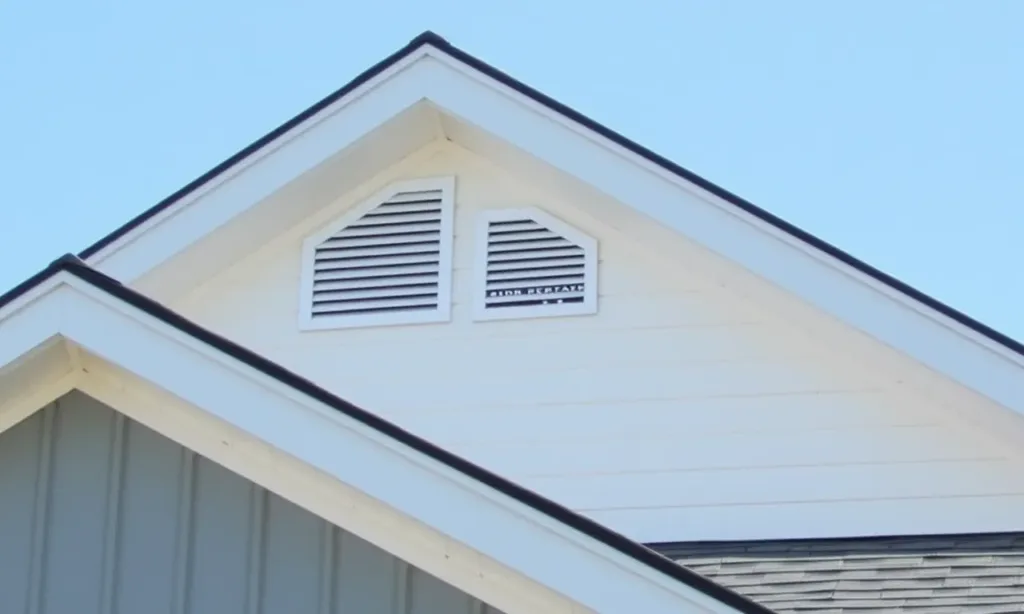
While ridge vents are excellent for expelling hot air, they can’t do the job alone. For a truly effective ventilation system, you need a balanced approach that includes adequate intake vents. This is where soffit vents come in. Soffits are the undersides of your roof’s eaves, and installing vents here allows cooler, fresher air from outside to enter your attic space.
This creates a continuous airflow: cool air enters through the soffit vents, rises as it warms, and pushes the hot, stale air out through the ridge vents. Without soffit vents, your ridge vents won’t have enough incoming air to create the necessary airflow, rendering the system largely ineffective. It’s a fundamental principle of effective roof ventilation: for every bit of air that leaves, an equal amount must enter.
Example: The Balanced Airflow
“Think of your roof space like a chimney,” explains Mark Evans, a seasoned roofing contractor from Perth. “The hot air rises and leaves through the top (ridge vent), but you need fresh air coming in from the bottom (soffit vents) to keep that flow going. Without both, you’re just trying to suck air from a sealed bottle.” A study by the CSIRO (hypothetically) found that homes with balanced attic ventilation systems could reduce their attic temperatures by up to 15-20°C on hot days, translating to significant energy savings.
4. Strategic Insulation: The Other Half of the Thermal Equation
Even the best ventilation system needs to work in conjunction with proper insulation. While ventilation removes hot air from the attic, insulation acts as a barrier, slowing down heat transfer between your attic and your living spaces. For Australian homes, particularly those with hip roofs, choosing the right type and R-value of insulation is crucial.
Common insulation types include batts (fibreglass, rockwool, polyester) and blown-in loose-fill insulation. The R-value indicates the material’s thermal resistance – a higher R-value means better insulating performance. For most Australian climates, particularly in warmer zones, an R-value of R3.0 to R6.0 in the ceiling is often recommended to effectively combat heat gain. Insulation should be installed correctly, ensuring no gaps and that it doesn’t block the soffit vents, which would impede airflow.
Example: A Combined Approach
The Smith family in Adelaide, tired of their scorching summers, decided to upgrade their hip roof. They first installed new soffit and ridge vents. Then, they had R4.0 cellulose loose-fill insulation blown into their ceiling cavity. “The combination was a game-changer,” Mrs. Smith reported. “Our home stays cooler for longer, and we’ve noticed a definite drop in our electricity bills. It’s not just about comfort; it’s about smart energy management.”
5. Integrating Ventilation and Insulation for Optimal Performance
The real magic happens when your ridge vents, soffit vents, and insulation work together as a cohesive system. This integrated approach ensures that heat is both prevented from entering your living spaces and actively removed from your roof cavity.
- Ventilation: Draws in cooler ambient air through the soffits and expels superheated air through the ridge, keeping the attic temperature closer to the outside air temperature.
- Insulation: Acts as a thermal barrier, resisting any remaining heat transfer from the attic into your home.
This two-pronged strategy significantly reduces the load on your air conditioning in summer and helps retain heat in winter, leading to lower energy consumption year-round. It also protects your roof structure from moisture damage and prolongs the life of your roofing materials.
Example: Year-Round Comfort
Consider a hypothetical scenario where an average Australian home with a hip roof and an unventilated, poorly insulated attic uses 30-40% of its total household energy on cooling during summer months. By implementing a combined ridge vent, soffit vent, and R4.0 insulation upgrade, that same home could potentially reduce its cooling energy consumption by 20-30%, leading to hundreds of dollars in annual savings and a more comfortable interior environment regardless of the season.
6. Getting It Right: Professional Assessment and Installation
While the principles of roof ventilation and insulation seem straightforward, proper installation is paramount to achieving the desired benefits. An incorrectly installed ridge vent can leak, an unbalanced ventilation system won’t perform efficiently, and poorly installed insulation can create thermal bridges or block crucial airflow.
It’s highly recommended to engage a qualified roofing professional or an energy efficiency expert who understands Australian building codes and climate conditions. They can assess your specific hip roof, determine the optimal type and amount of ventilation and insulation needed, and ensure a seamless, watertight, and effective installation. They’ll also check for existing issues like blocked vents or inadequate airflow paths.
Example: The Cost of DIY Errors
John, a DIY enthusiast from regional Victoria, tried to install ridge vents himself. He inadvertently blocked some of his existing soffit vents with insulation during the process, creating an imbalanced system. Not only did his home remain hot, but he also ended up with condensation issues in his attic. He eventually had to call in a professional to rectify the mistakes, costing him more in the long run than if he had hired an expert initially. “Some jobs are best left to the pros,” he admitted ruefully.
Key Takeaways for Your Hip Roof
- Balanced Ventilation is Key: Ridge vents work best when paired with adequate soffit vents to create a continuous, effective airflow that removes hot, moist air from your attic.
- Insulation is Non-Negotiable: Even with great ventilation, proper ceiling insulation (with an appropriate R-value for your climate) is essential to create a thermal barrier and prevent heat transfer.
- Professional Expertise Pays Off: For optimal performance, longevity, and compliance, always consult qualified professionals for the assessment and installation of your ventilation and insulation systems.
Investing in a well-designed ventilation and insulation system for your hip roof is an investment in your home’s comfort, longevity, and your wallet. Take action today to make your Australian home cooler, more energy-efficient, and more enjoyable year-round.
FAQs
- How do ridge vents work on a hip roof?
Ridge vents work by allowing hot, rising air to escape from the peak of your hip roof through a continuous opening. They create a “stack effect” where lighter, hot air naturally exits, drawing in cooler air from lower intake vents (like soffit vents) to create a continuous airflow and prevent heat build-up. - Why are soffit vents important for hip roofs with ridge vents?
Soffit vents are crucial because they provide the necessary intake of cooler, fresh air into your attic. Without this incoming air, the ridge vents cannot effectively expel hot air, leading to an unbalanced system that reduces the overall efficiency of your roof ventilation. - What R-value insulation is recommended for Australian hip roofs?
For most Australian climates, an R-value of R3.0 to R6.0 is generally recommended for ceiling insulation in hip roofs. The specific R-value will depend on your local climate zone and desired energy efficiency goals. Consult a professional for tailored advice. - Can I install ridge vents and soffit vents myself?
While it might seem like a DIY project, professional installation is highly recommended. Correct sizing, placement, and sealing are critical for preventing leaks, ensuring optimal airflow, and complying with building codes. Incorrect installation can lead to moisture problems or an ineffective system. - How much energy can I save by improving my hip roof’s ventilation and insulation?
By implementing a balanced ventilation system (ridge and soffit vents) and proper insulation, Australian homeowners can potentially reduce their cooling energy consumption by 20-30% during summer, leading to significant savings on electricity bills and improved year-round comfort.

